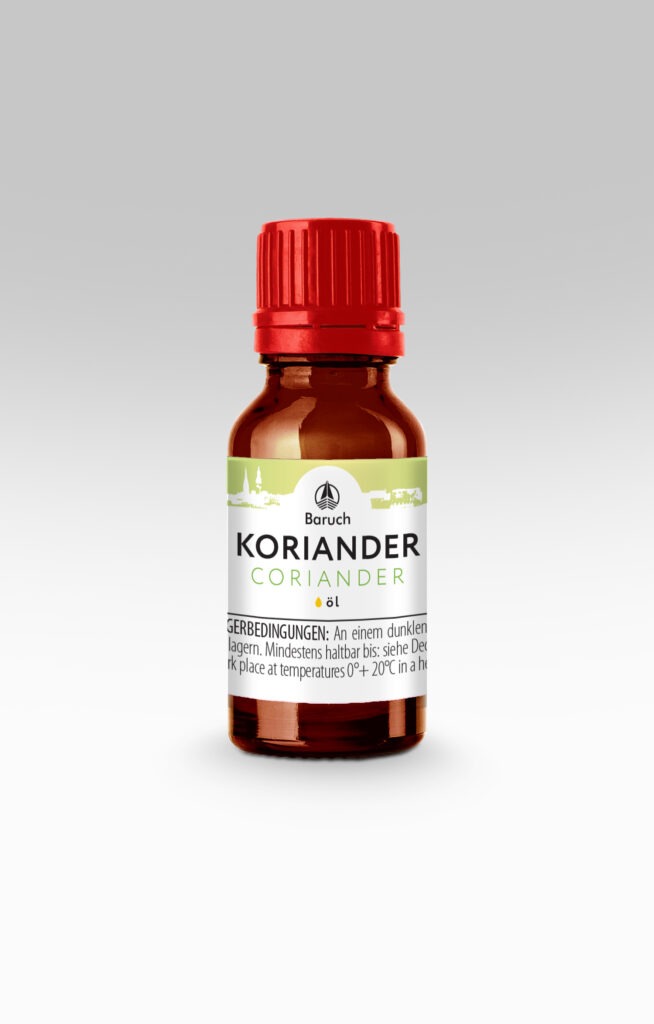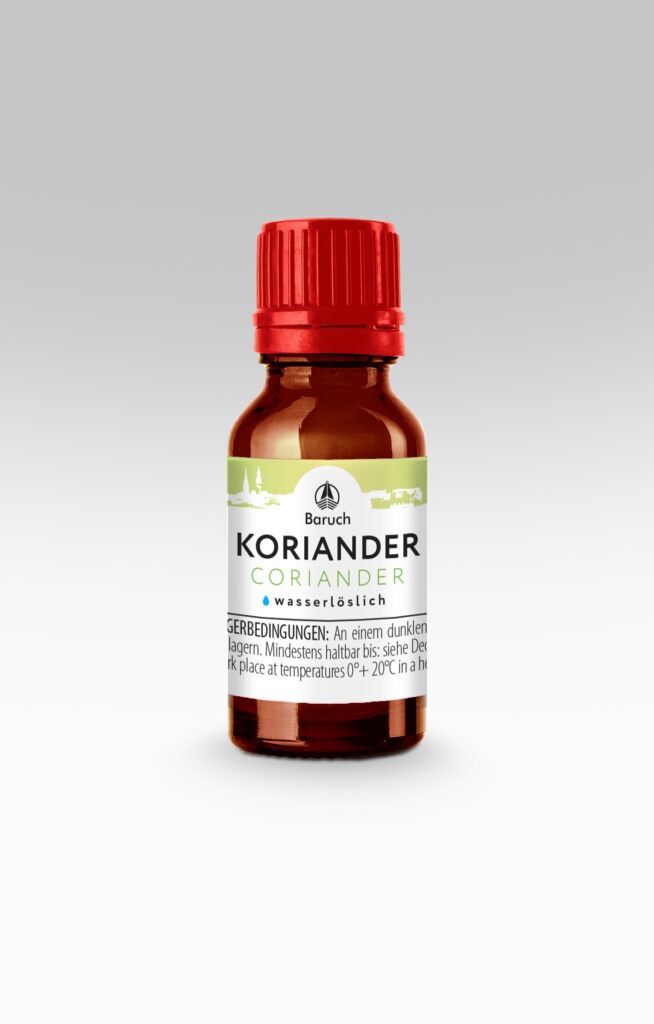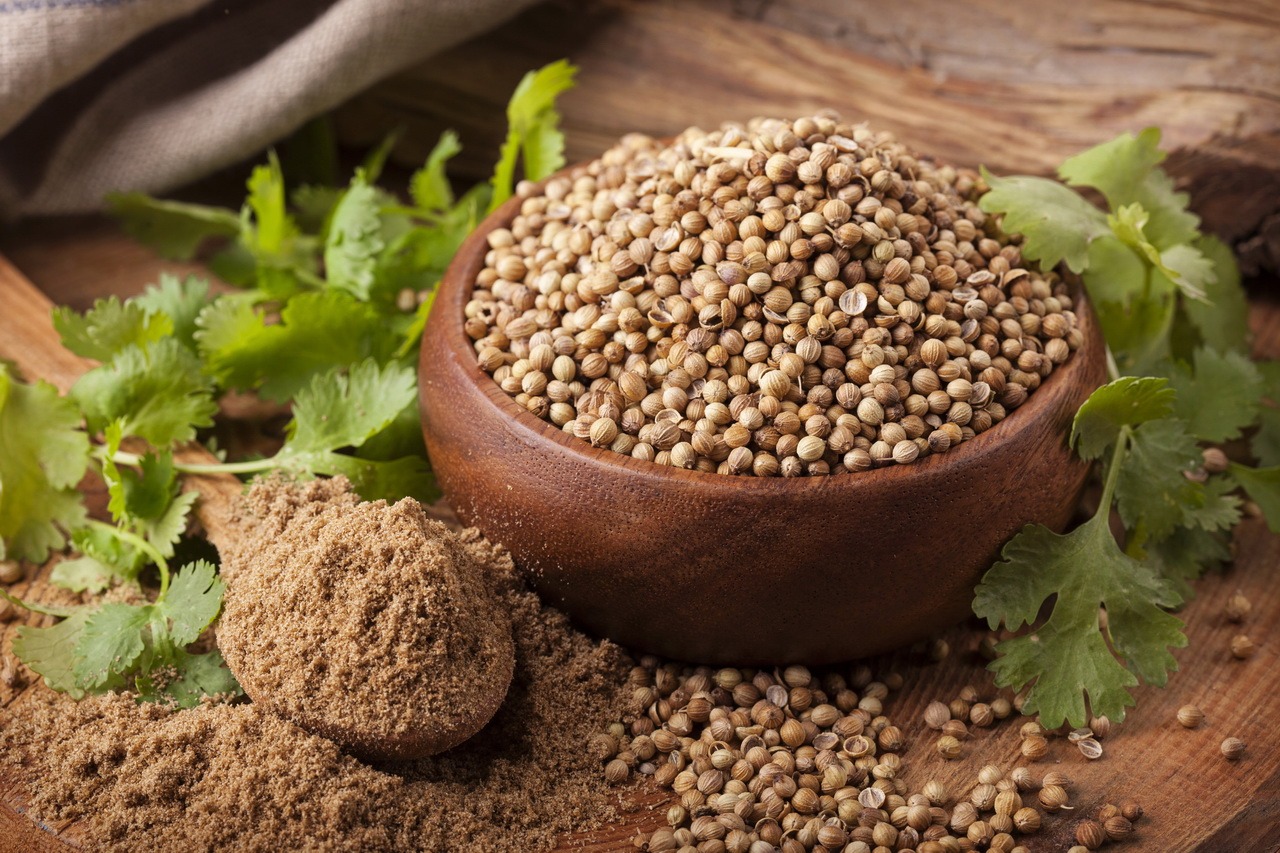Coriander (Coriandrum sativum) is an annual herb in the family Apiaceae. It is also known as Chinese parsley, dhania or cilantro. All parts of the plant are edible, but the fresh leaves and the dried seeds (as a spice) are the parts most traditionally used in cooking.
The European and Russian names for coriander are derived from the original Roman name. In official medicine, preparations with extracts and oil extracts from coriander seeds are recommended as antiseptic and analgesic agents for diseases and disorders of the gastrointestinal tract. It is also recommended that coriander be used to treat upper respiratory catarrh. Products made from coriander seeds are used in medicines to treat eye diseases and as a remedy for cracked nipples in nursing mothers. In dietetics, coriander is recommended as a “fat burner”.
Fresh coriander, like a herb, in the form of ripe seeds and of course in the form of a CO2 extract, is used as a spice in cooking around the world. It is used in sauces, in the manufacture of meat and fish products and canned food, in bread baking, in the confectionery industry, in the formulation of certain types of beer and liqueurs.
The CO2 extract from coriander has also established itself as an excellent addition to fermentation products – kefirs and especially kvass. It is widely used in the manufacture of tomato juices and vegetable juice mixes. It’s part of the Borodinsky blend and is used as an ingredient in filling oils.
CO2 extract from coriander “Biozevtika” is a light yellow oily liquid with a strong, distinctive, characteristic odor. In the course of gas chromatographic-mass spectrometric investigations, more than 400 compounds in the extract were analyzed, of which more than 50 were identified.


Chart 1. Main components of the coriander CO2 extractl
| NAME | CONTENT IN% OF THE AMOUNT OF VOLATILE COMPONENTS | EFFECT |
|---|---|---|
| Linalool | 40 | Antimicrobial. Component in perfumery |
| Linalyl acetate | 5 | Carminative. Component in perfumery |
| Geraniol | 4,5 | Has a diuretic, antihypertensive, fungicidal effect, natural antibiotic. Used in perfumery |
| Camphor | 2,8 | Strengthens the respiratory center, stimulates the heart. Narrows peripheral blood vessels, improves blood flow to the capillaries |
| Palmitic acid | 2,8 | Unsaturated fatty acid for water repellency in cosmetics |
| α- and β-linolenic acid | 2 | Unsaturated, essential fatty acids from the class of omega-3 fatty acids. It has a membrane protecting, angioprotective effect. Immunomodulatory, improves brain metabolism |
| β-carotene | 1,8 | Provitamin A, a powerful antioxidant, especially in combination with unsaturated fatty acids |
| Linoleic acid | 1,7 | An essential unsaturated fatty acid of the omega-6 class. It has anti-inflammatory, vasoconstrictor, and aggregating effects. If there is no balance between omega-3 and omega-6 fatty acids, competitive processes can arise that influence the metabolism |
| Limonene | 1,2 | Effective against fungi, mold and bacteria. Perfume scent. Effective repellant. Not recommended in cosmetic preparations for sensitive and allergy-prone skin |
| Borneol | 1,1 | Antimicrobial. Component in perfumery |
| β-pinene | 3,5 | easily penetrates the epidermis and irritates the nerve endings, causing intense blood flow. Causes expectorant and expectorant effects |
Coriander-based cosmetics are used in the manufacture of products for:
- Fighting acne
- Removal of flaking skin
- Removal of puffiness and bags under the eyes
- Whitening the skin
- Toning mature skin
- Normalization of the secretion of the sebum glands
- Premature graying
Chart 2. Application rates, recommendations for the use and storage of CO2 extract from coriander
| Food usage rates | Item А100: 0.003% (30g per ton) Water-soluble microemulsions EMA1: 0.3% (3l per 1000l or 3ml per liter) |
| Application rates in cosmetics | Item А10: 1-3% Item А100: 0.1-0.3% |
| Recommendations for use | It is recommended to add CO2 extracts in the final stages of preparation, in the cooling phase of the end product. |
| Storage Instructions | It is recommended to store CO2 extracts in a closed container in a cool room and avoid direct sunlight. |
